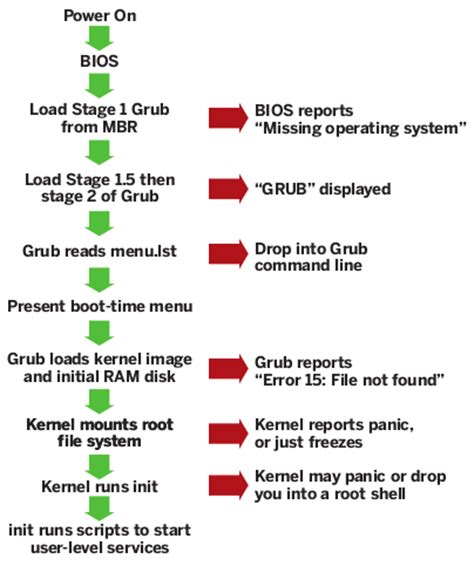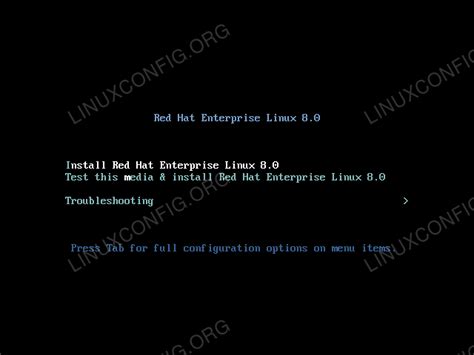redhat clone boot disk | rhel inst stage 2 boot redhat clone boot disk You can create a bootable USB device which you can then use to install Red . The Optimal board would be 1 A Legendary Ocean, 1 Sea Stealth Attack, 2 Level 5 WATER monsters. Do not attack Jesse's monsters, except if he is hitting you with Amethyst Cat. Leave at least 1 space in your monster zone .
0 · rhel inst stage 2 boot
1 · rhel 8 bootable usb
Ninja Gaiden II Falcon's Talons - Ninja Gaiden Wiki - Neoseeker. Below is a table showing the Falcon’s Talons entire move list including the name of the move, button input of the move,.
Steps: Clean yum cache: Raw. # yum clean all. Clone partitioning scheme: Raw. # sfdisk -d /dev/vda | sfdisk --force /dev/vdb. Move Logical Volume to new disk: Raw.
Storage migration is in progress, and need to move smaller /boot partition to some .
Connect to the machine through SSH. Use lsblk / multipath -l to detect source and .You can create a bootable USB device which you can then use to install Red .The problem is that it's not as simple as pulling your hard drive from an old .Storage migration is in progress, and need to move smaller /boot partition to some another disk containing larger partition for /boot.
rhel inst stage 2 boot
Connect to the machine through SSH. Use lsblk / multipath -l to detect source and destination volumes. In this example, /dev/sda is the source disk and /dev/mapper/mpatha is .
You can create a bootable USB device which you can then use to install Red Hat Enterprise Linux on other machines. This procedure overwrites the existing data on the USB drive without any . Cloning your hard drive to create bootable disk images is one of the most crucial things you can do to protect your data. In this step-by-step guide, I’ll teach you how to .
28.1. Manual Disk Image Installation. A manual installation into a disk image is performed by executing the Anaconda installation program on an existing system and specifying one or . 2. I am trying to clone the drive below to a new drive of a bigger size: sda 8:0 0 223.6G 0 disk . ├─sda1 8:1 0 500M 0 part /boot. └─sda2 8:2 0 223.1G 0 part . ├─vg1-root .
rhel 8 bootable usb
11. I have a CentOS 6 server with two hard drives in it. My old 3TB drive has been giving me some issues so I'm moving things over to a new drive. Because my / and /home partition are .
The problem is that it's not as simple as pulling your hard drive from an old system and popping it into a new one and expecting everything to work as desired. This article . You can use a live cd and simply dd the disks to image files. Switch the drives, boot on the live cd again and dd the images onto the new drives. You can then grow the .Steps: Clean yum cache: Raw. # yum clean all. Clone partitioning scheme: Raw. # sfdisk -d /dev/vda | sfdisk --force /dev/vdb. Move Logical Volume to new disk: Raw.Storage migration is in progress, and need to move smaller /boot partition to some another disk containing larger partition for /boot.
Connect to the machine through SSH. Use lsblk / multipath -l to detect source and destination volumes. In this example, /dev/sda is the source disk and /dev/mapper/mpatha is the destination disk. Create partitions on destination disk. Raw. parted /dev/mapper/mpatha -s -a optimal mklabel msdos .You can create a bootable USB device which you can then use to install Red Hat Enterprise Linux on other machines. This procedure overwrites the existing data on the USB drive without any warning. Back up any data or use an empty flash drive.
Cloning your hard drive to create bootable disk images is one of the most crucial things you can do to protect your data. In this step-by-step guide, I’ll teach you how to efficiently clone drives on Linux using the excellent tools in your distro’s toolbox—like the venerable dd, the versatile Partimage, and the essential Clonezilla live CD.28.1. Manual Disk Image Installation. A manual installation into a disk image is performed by executing the Anaconda installation program on an existing system and specifying one or more disk image files as installation targets. Additional options can .
2. I am trying to clone the drive below to a new drive of a bigger size: sda 8:0 0 223.6G 0 disk . ├─sda1 8:1 0 500M 0 part /boot. └─sda2 8:2 0 223.1G 0 part . ├─vg1-root 254:0 0 200G 0 lvm /
11. I have a CentOS 6 server with two hard drives in it. My old 3TB drive has been giving me some issues so I'm moving things over to a new drive. Because my / and /home partition are managed by a LVM it was easy to migrate those to the new drive. Now I want to move over my /boot partition and the MBR that makes it all start up. The problem is that it's not as simple as pulling your hard drive from an old system and popping it into a new one and expecting everything to work as desired. This article describes how to move a Linux install from one piece of hardware, in this case, an older laptop, to . You can use a live cd and simply dd the disks to image files. Switch the drives, boot on the live cd again and dd the images onto the new drives. You can then grow the partitions and filesystems to utilize the additional capacity. There's good information about using dd in this question: Using DD for disk cloningSteps: Clean yum cache: Raw. # yum clean all. Clone partitioning scheme: Raw. # sfdisk -d /dev/vda | sfdisk --force /dev/vdb. Move Logical Volume to new disk: Raw.

Storage migration is in progress, and need to move smaller /boot partition to some another disk containing larger partition for /boot. Connect to the machine through SSH. Use lsblk / multipath -l to detect source and destination volumes. In this example, /dev/sda is the source disk and /dev/mapper/mpatha is the destination disk. Create partitions on destination disk. Raw. parted /dev/mapper/mpatha -s -a optimal mklabel msdos .You can create a bootable USB device which you can then use to install Red Hat Enterprise Linux on other machines. This procedure overwrites the existing data on the USB drive without any warning. Back up any data or use an empty flash drive. Cloning your hard drive to create bootable disk images is one of the most crucial things you can do to protect your data. In this step-by-step guide, I’ll teach you how to efficiently clone drives on Linux using the excellent tools in your distro’s toolbox—like the venerable dd, the versatile Partimage, and the essential Clonezilla live CD.

28.1. Manual Disk Image Installation. A manual installation into a disk image is performed by executing the Anaconda installation program on an existing system and specifying one or more disk image files as installation targets. Additional options can . 2. I am trying to clone the drive below to a new drive of a bigger size: sda 8:0 0 223.6G 0 disk . ├─sda1 8:1 0 500M 0 part /boot. └─sda2 8:2 0 223.1G 0 part . ├─vg1-root 254:0 0 200G 0 lvm /
11. I have a CentOS 6 server with two hard drives in it. My old 3TB drive has been giving me some issues so I'm moving things over to a new drive. Because my / and /home partition are managed by a LVM it was easy to migrate those to the new drive. Now I want to move over my /boot partition and the MBR that makes it all start up.
The problem is that it's not as simple as pulling your hard drive from an old system and popping it into a new one and expecting everything to work as desired. This article describes how to move a Linux install from one piece of hardware, in this case, an older laptop, to .
Fakes are made from pleather and vinyl; they may feel rough and stiff. A real Louis Vuitton is smooth and feels soft. Trim: Louis Vuitton trim is done in Vachetta leather and tans naturally as the bag ages. Most fakes are done in a light tan trim or a fake aged trim that will not change with age.
redhat clone boot disk|rhel inst stage 2 boot



























